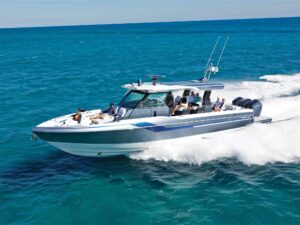I’ve recently returned from a trip to Volvo Penta’s Krossholmen Test Center, near Gothenberg, Sweden, where I ran their new engines and put their latest marine systems technology to the test. A new joystick system, a new range of engines, a battery management system and what’s said to be the first electronic key fob to remotely energize a boat’s driveline, were all introduced.
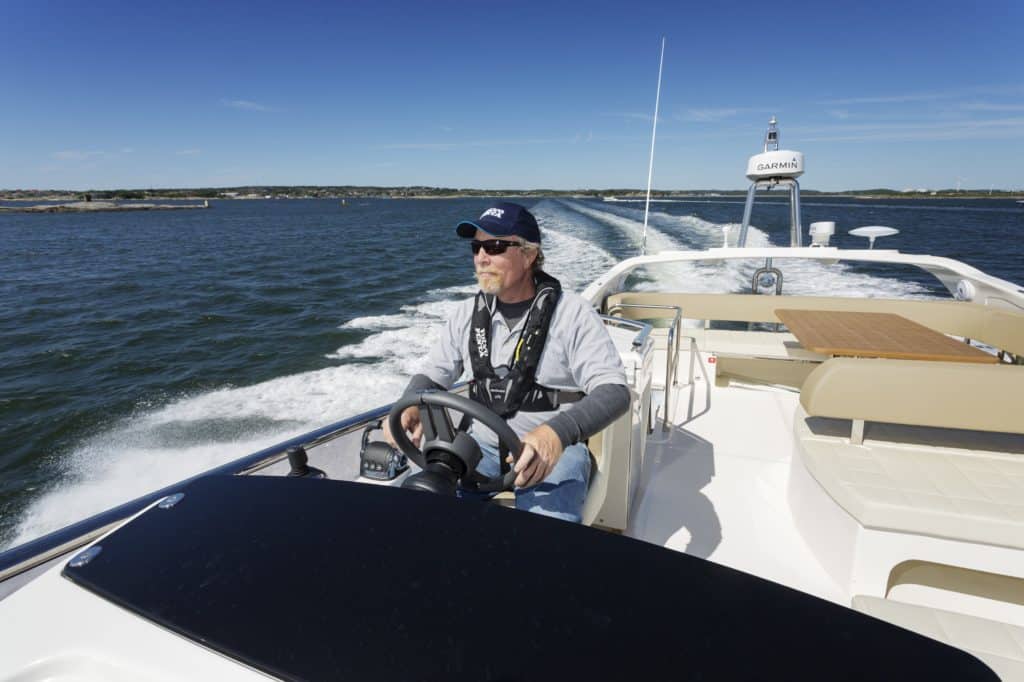
The trip was dense with seminars, sea trials and hands-on sessions with engineers, technicians and factory captains. The theme running through all the new innovation is an effort to make the operation of a boat easier.
Volvo Penta has always provided boat power systems from the key switch to the propeller (or, ahem…from the nut behind the wheel to the prop nut ☺ ). This is true whether boaters choose gas or diesel or whether inboard or sterndrive. It’s an advantage many boaters have come to value, primarily since one point of contact can arrange for parts and service when needed.
CHECK OUT BOATING BOAT TESTS OF VOLVO PENTA IPS
Now the Swedish engine maker, who brought pod drives to the forefront of recreational boating 11 years ago with the Introduction of IPS, is making market leading strides in marine electronics, battery management as well as safety, convenience and marine diesel engines. Here are some highlights.
New D8 Diesel Engine
I ran the new D8 diesel engine in both IPS and inboard configurations aboard an Azimut Atlantis 55 and a Cranchi 48. These are six-cylinder engines available at both 600- and 550-hp ratings. Both displace 470 cid/ 7.7 liters. They delivered excellent performance and stood out for quiet operation, credit for which we attribute to the lack of cables to transmit sound in these ” fly-by-wire” engines, common rail fuel injection, and special engine mounts. We’ll publish a full review of the D8, including fuel economy and speeds under load, in an upcoming Motorhead.
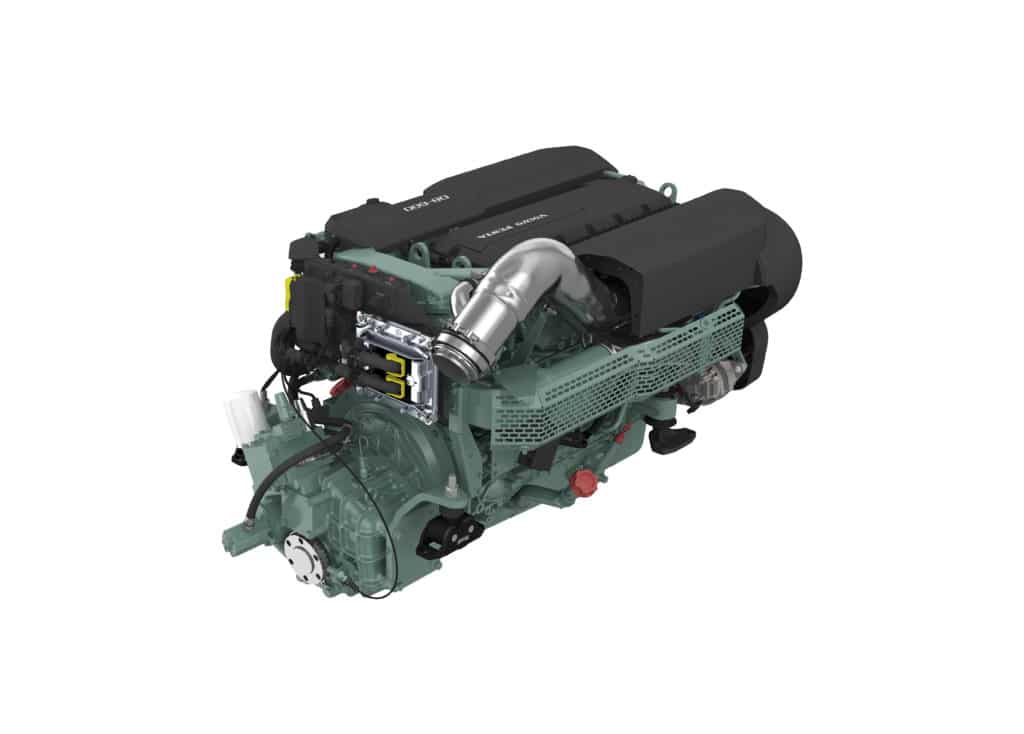
Volvo Penta D8 Diesel Inboard
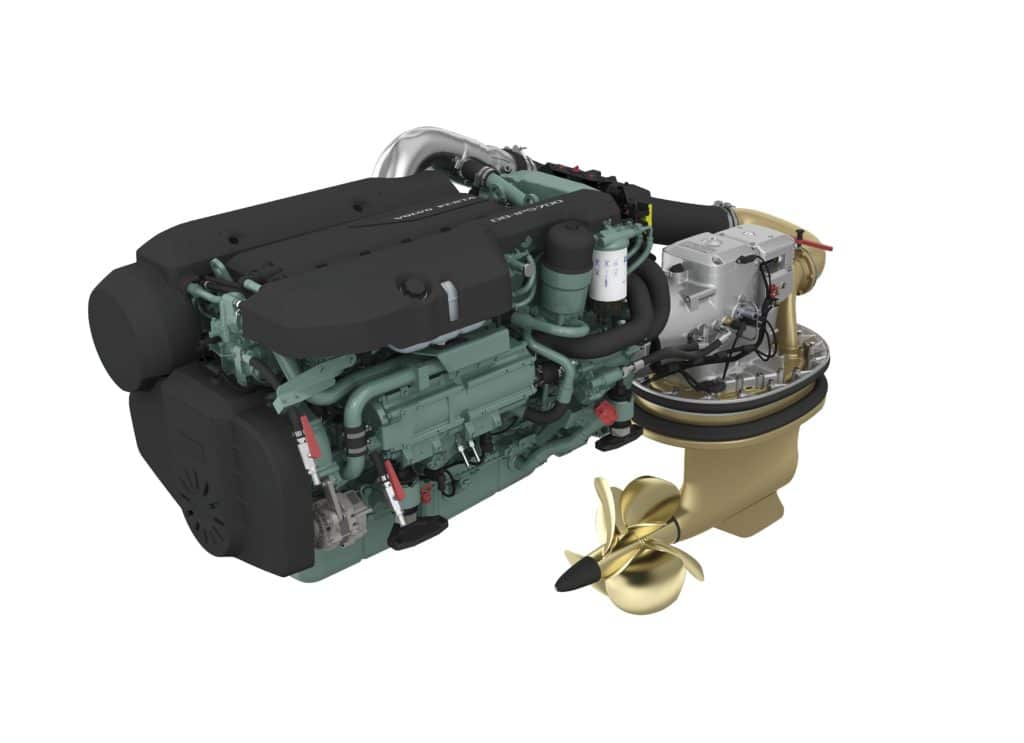
Volvo Penta D8 Diesel IPS
LEARN MORE ABOUT VOLVO PENTA D8 DIESEL ENGINES
Volvo Penta Joystick For Inboard
I also had the opportunity to test Volvo Penta’s new joystick for inboard. Integrated with a bow thruster (with the option to add a sternthruster, which I found unnecessary), this feature proved brilliant in getting a Cranchi 48 that was moored side-to, and pressed by the breeze, off of a lee dock. In a situation where I might choose backing away in a U-turn, but there was no room for that in this case; or, where I would use a spring line to get clear, the joystick provided a great option.
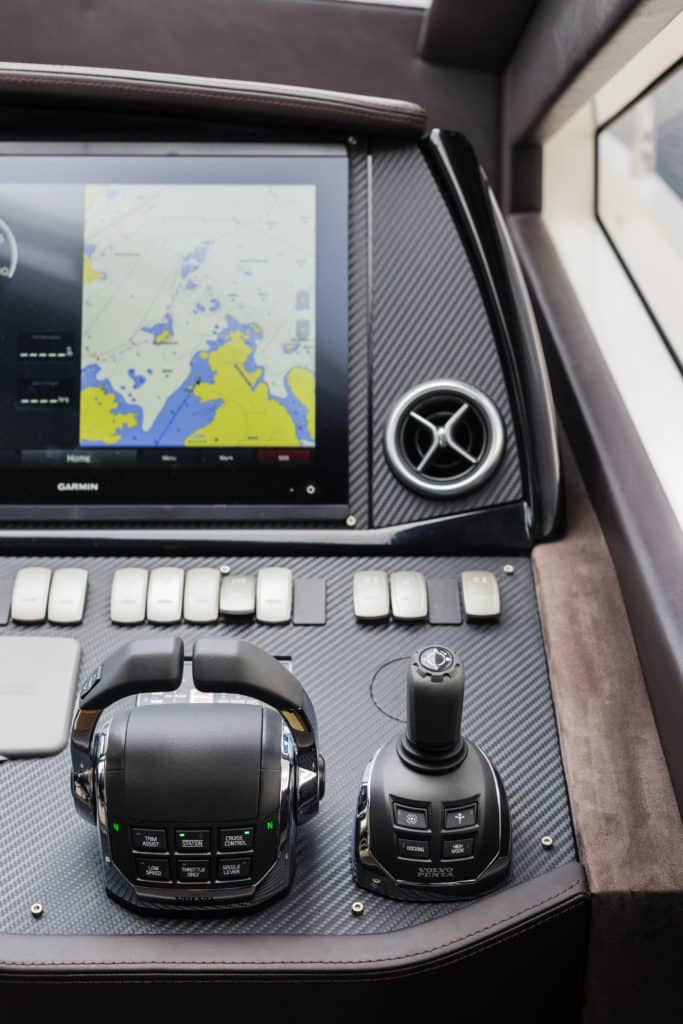
Volvo Penta Joystick for Inboard
I simply bent the joystick, throwing in a bit of twist as well, and the boat moved sideways away from the dock. Later, we used the joystick to slip sideways in between two moored boats at restaurant, much to the amazement of the crew enjoying a sundowner in the cockpit of the yacht just astern of us. Could we have done it without the joystick? That’s like asking could we navigate without the GPS. The answer is, of course, “yes.” But for the sake of convenience, there’s no reason to do without the joystick, the GPS, the head, hot water, refrigeration, an anchor windlass, etc.
Part of Volvo Penta’s Electronic Vessel Control (EVC) system, the joystick for inboard includes integrated autopilot. We found this ‘pilot intuitive to use and responsive. Once anomaly I did discover was that when dodging a piece of flotsam, or otherwise making a temporary course change while the autopilot is steering in route mode, the ‘pilot will return the boat to the course after dodging the debris, turtle, errant jetskier or what have you. But if you are running “point-to-point” with the pilot–manually steering a course and engaging the pilot–it will not return to the course if you dodge. You must re-set the course.
There’s nothing wrong with the way that works, but I want to raise awareness, lest someone learn the hard way.
LEARN MORE ABOUT VOLVO PENTA JOYSTICK FOR INBOARD
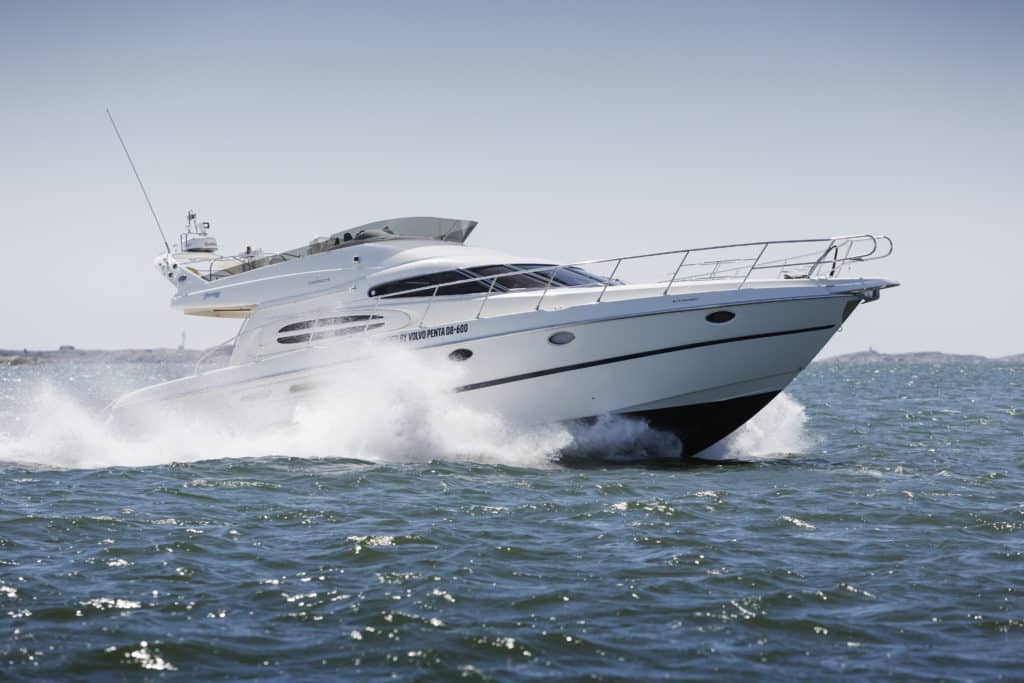
Cranchi 48 powered by Volvo Penta D8 Diesel
Expanded Range of IPS
The new IPS 800 and IPS 900 utilize the D8-550 and D8-600 engines respectively. Those who own, or know about IPS, are aware that since IPS delivers higher efficiency than comparably-rated shaft-inboard drivelines, the model designators reflect the approximate performance potential rather than the actual horsepower. Our own testing of IPS over the years bears out the performance gains.
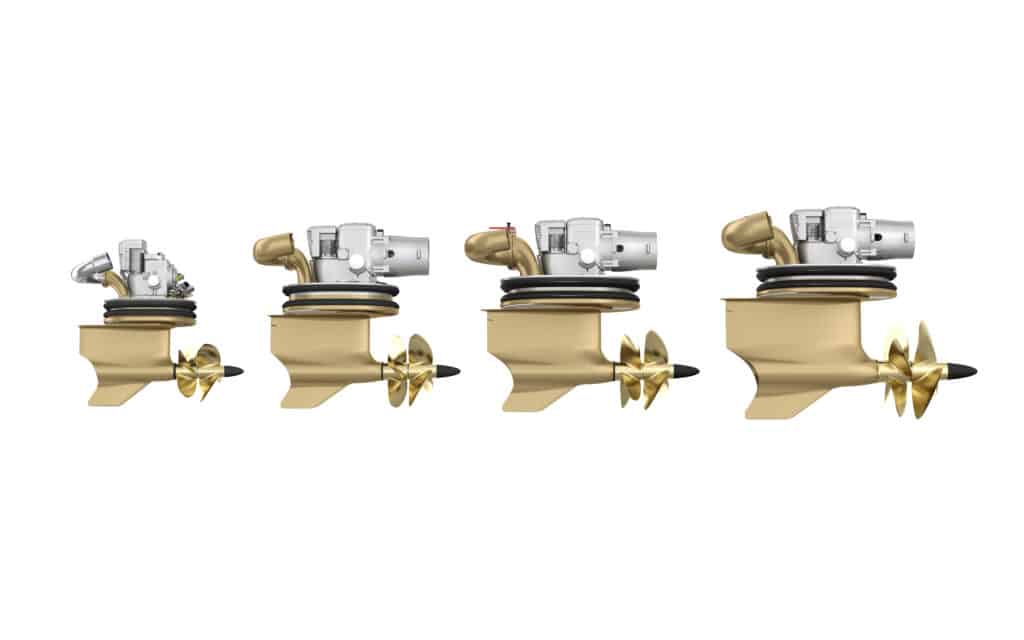
Volvo Penta IPS Range
LEARN MORE ABOUT WHAT’S NEW WITH VOLVO PENTA IPS
Battery Management System with e-Key Remote
Also new is a battery management system that includes what Volvo Penta is touting as the first remote keyfob to energize a boat’s driveline. In short, you need not use ignition keys or climb aboard and flip-on circuit breakers in order to start your engines. Lights and other accessories can be programmed to engergize with this key fob and the e-key remote remote does these tasks from as far away as 100 meters. When you leave the boat, you can power down with a touch of the button.
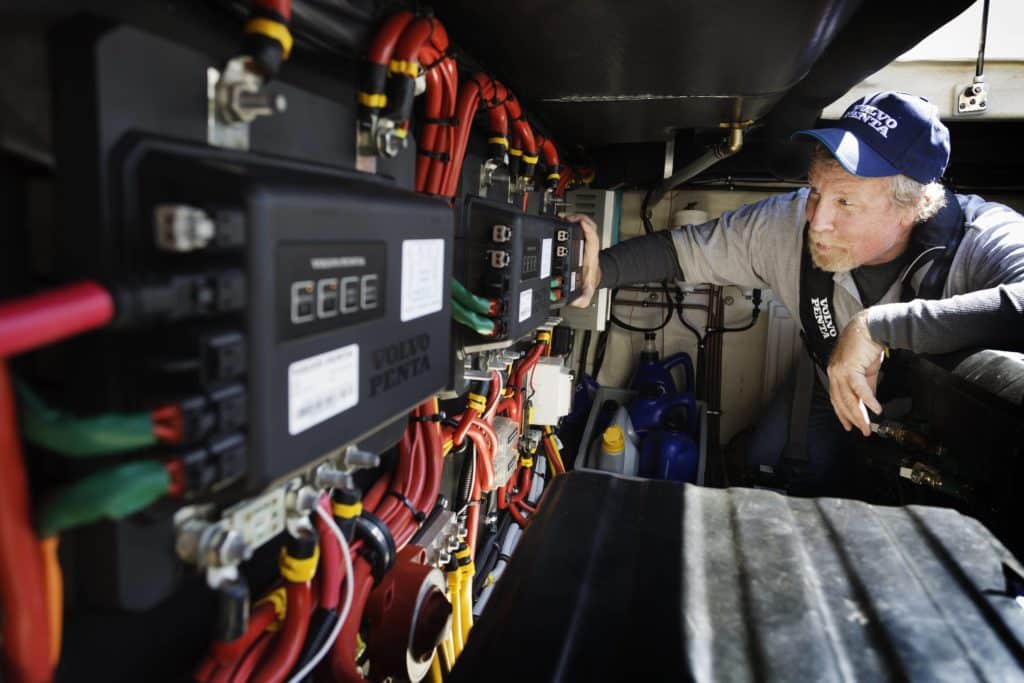
The key fobs are waterproof to IPX-7 specs and feature RFID backup should the battery or transmitter go bad.
Like a car’s key, the e-Key serves as theft protection since it is required for the engines to power up.
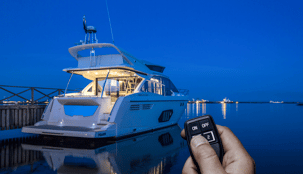
Volvo Penta e-Key Remote
The Battery Management System includes controller mounted in the engine space both monitor and automatically switch between battery banks. These take the place of selector switches and relays ( in fact, Volvo Penta claims that the BMS has eliminated 7 cables and 14 electrical connections versus a conventional battery setup)So, if one bank is weak, the system will simply add amperage from a healthy bank automatically. State of charge, and other data is sent to the MFDs at the helm. Manual overrides are available on the controllers. My inspection found the system, neat, compact and easy to use and understand. The components appear to be robust.
LEARN MORE ABOUT VOLVO PENTA e-KEY REMOTE AND BATTERY MANAGEMENT
Glass Cockpit
Volvo Penta is calling its Glass Cockpit a game-changer. Available displays range from 7- to 24-inches diagonal measurement. Autopilot is built in, and the system integrates with both IOS and Android devices, as well utilizing WiFi and Bluetooth connectivity.
I got to see this first hand while sea trialing a Targa 44 and was impressed by the above features, as well as one more: the ability of the navigation system to allow one-touch creation of routes. Known as “ rubber-banding” this feature precludes the need to drop multiple waypoints when planning a cruise that requires a circuitous course. Check out this short video detailing the Auto Routing feature.
Naturally, using this feature is dependent upon the quality of the charting, and like all navigation aids, should be used as just one part of your total navigation regime including practices of seamanship, such as posting a lookout, reading the water and maintaining situational awareness. It is also dependent upon the boater to enter the correct profile data into the system, such as the boat’s draft.
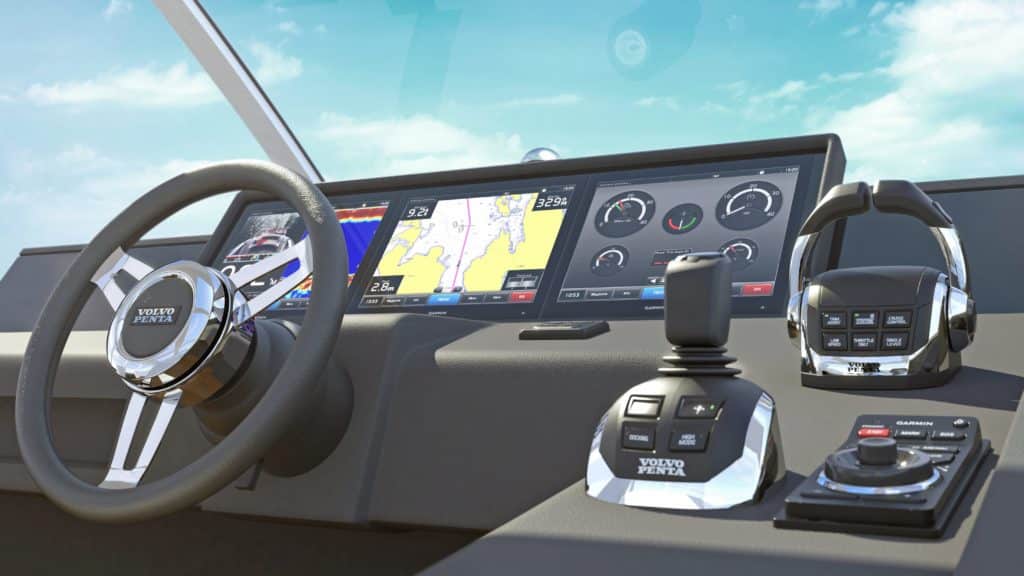
Volvo Penta Glass Cockpit
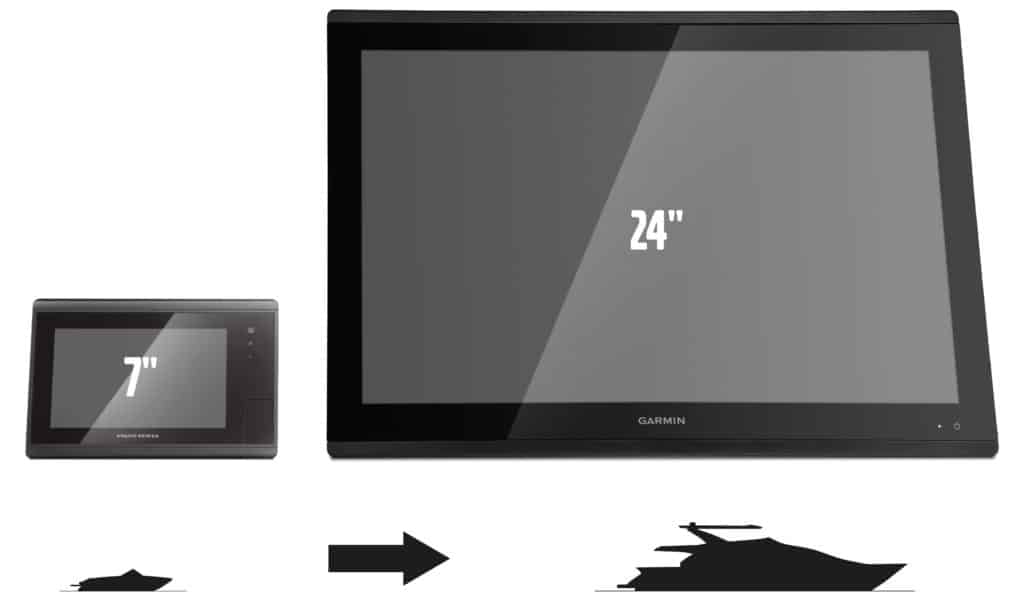
Volvo Penta Glass Cockpit Screens for every size boat
Look for more coverage of these Volvo Penta innovations in upcoming dedicated articles and as inclusion in boat tests utilizing the engines and systems.




